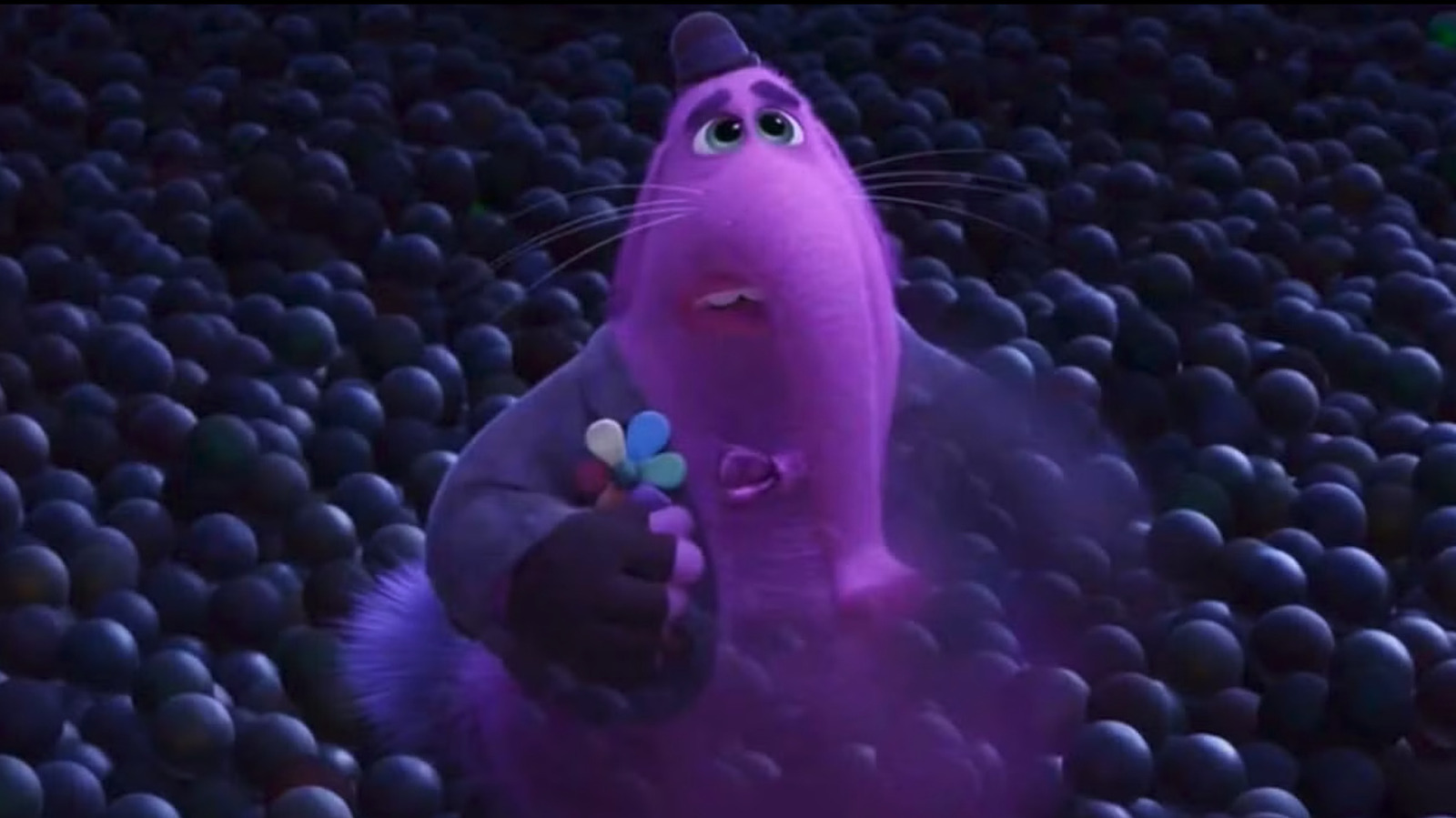‘Haruki Murakami Manga Stories Vol. 3’ Gives Foreboding Fiction a Macabre Makeover [Review]
Two of Haruki Murakami’s classic tales of ennui and ambivalence – Scheherazade and Sleep – gain new life in this impressive manga adaptation. The right story can reach an entire generation and become a foundational text, but the medium in which it’s presented is often just as important. There are plenty of horror novels that […] The post ‘Haruki Murakami Manga Stories Vol. 3’ Gives Foreboding Fiction a Macabre Makeover [Review] appeared first on Bloody Disgusting!.
![‘Haruki Murakami Manga Stories Vol. 3’ Gives Foreboding Fiction a Macabre Makeover [Review]](https://i0.wp.com/bloody-disgusting.com/wp-content/uploads/2025/04/Haruki-Murakami-Manga-Stories-Vol-3-Car-Attack.jpg?fit=1400%2C700&ssl=1)
Two of Haruki Murakami’s classic tales of ennui and ambivalence – Scheherazade and Sleep – gain new life in this impressive manga adaptation.
The right story can reach an entire generation and become a foundational text, but the medium in which it’s presented is often just as important. There are plenty of horror novels that didn’t truly pop until they were turned into movies, while other movies struggled until lengthier TV series adaptations came along. The way in which stories are told is often as fundamental as the story itself. Two unique mediums can present the same story in completely different ways, which is so powerful to consider.
Haruki Murakami is a renowned Japanese novelist whose works have been turned into unnerving films like Burning and Piercing. Murakami’s works have recently started to receive manga makeovers though the Haruki Murakami Manga Stories series. Volume 1 included Super-Frog Saves Tokyo, Where I’m Likely to Find It, Birthday Girl, and The Seventh Man; Volume 2 featured The Second Bakery Attack, Samsa In Love, and Thailand, whereas the third edition adapts Murakami’s stories Scheherazade and Sleep.
Haruki Murakami Manga Stories Vol. 3 features the fewest stories of the three anthologies, but it’s actually the longest of these books. Both of its lengthy stories are given the bandwidth to properly breathe and get more experimental in their storytelling, panel construction, and layout.
Haruki Murakami Manga Stories Vol. 3 is a satisfying entry point for curious Murakami newcomers. It successfully breathes new life into these stories in a way that feels authentic to Murakami’s original vision. Adapted by Jean-Christophe Deveney and illustrated by PGML, Manga Stories Vol. 3’s texts are expansions of their source material and not just a streamlined, visual shortcut. Haruki Murakami Manga Stories Vol. 3 is such a unique, creative, brave approach to Murakami’s signature brand of subversive storytelling. These two haunting slice-of-life scenarios aren’t afraid to shine a light on humanity’s most desperate and believable habits.
Scheherazade operates as a flowery toxic “love story” that’s akin to something like Phantom Thread or even Audition. One party is totally oblivious to the fact that they’re in this love story, while the other is completely head over heels. It’s a fascinating exercise in extended delusion; a tense exploration of folie à deux. Scheherazade really becomes this twisted parable on the basic symbiotic, parasitic relationship between trout and lamprey eels and how this dynamic has been endlessly echoed throughout history as a powerful way to make a point about codependency. This meshes with Murakami’s trademark knack for taking innocuous minutiae that snowballs into a sprawling tale of terror before everything is said and done. The hidden secrets that we keep with ourselves and rarely make privy to the rest of the world. These Russian nesting dolls of unresolved trauma where each layer reveals a more potent compulsion.

In Haruki Murakami Manga Stories Vol. 3, humans trade bizarre gestures with each other that often makes it feel like these are aliens’ interpretations of how humans function. Despite this extraterrestrial quality to the characters, Scheherazade and Sleep both tap into something deeply human that captures why Murakami has become such a captivating storyteller. He expresses a hidden, embarrassing side of humanity that other storytellers are often afraid to embrace.
Scheherazade does a great job with how people create tulpa-like totems and monuments to loved ones that turn into these powerful relics that have lives of their own. It beautifully explores how people inherently want to give meaning to inanimate objects and that there’s this level of emotional personification that’s a fundamental tenet of being alive. Both stories explore the visceral fear of fading away, becoming your shadow self, and getting lost in a haunting, toxic routine.
Scheherazade examines the nature of storytelling and the thin line between reality and fantasy that’s often in flux during storytelling. The storyteller’s identity inherently seeps into their narrative. Striking, raw visuals depict humans as flawed, imperfect, festering individuals, which helps amplify the story’s themes, especially once these visuals get more pronounced as Scheherazade continues. One remarkable moment of intimacy between characters is so chaotically rendered that it feels like the characters are literally vibrating off the page. It’s like looking at photographs that are double-exposed. There are also stretches of the graphic novel that feature hypnotic, repetitive visuals that help lull the reader into a pliable, susceptible state that’s comparable to the characters in the story.
There’s a very ‘80s era Frank Miller and Klaus Janson quality to these stories’ pronounced artwork. Scheherazade and Sleep’s artwork is blunt and utilitarian with how it depicts its narrators’ increasingly routine acts that bleed into nothingness over time. Deveney and PGML’s adaptations take advantage of being able to cut away to stark images and visual representations of the sprawling concepts and theories that are discussed by Murakami’s philosophical characters. It’s a really effective way to celebrate the medium that becomes a creative exercise in construction and craft so that these are far more than just “Haruki Murakami With Pictures!”

The manga’s second tale, Sleep, is a heightened, surreal story of prolonged insomnia, one woman’s unraveling, and how fantasy progressively invades reality until the two are impossibly linked together. Sleep’s visuals are just as impressive and innovative as what’s on display in Scheherazade. There’s great use of contrasting light and dark visuals that convey the opposite worlds that the storyteller occupies as she fluctuates between day and night, lucidity and surrealism. There’s an exceptional depiction of the twisted haze that is the protagonist’s waking nightmare through obscured images that can pop into vibrant extremes at a moment’s notice. Sleep depicts how its heroine’s world progressively gets sapped of color until it’s an opaque wasteland. It’s such a strong way to highlight the narrator’s erratic mental state while her sleep is off kilter. It’s a beautiful portrayal of the harrowing, suffocating nature of sleep paralysis and night terrors.
Sleep’s abrasive visuals reinforce how scared people try to escape into old habits as a way to transform into their past selves and time travel, to some extent. It’s part of the many masks that are necessary to wear in order to survive in the world. There are some truly terrifying images during the story’s finale that amplify Murakami’s words, message, and are likely to stick with the reader. These confident visuals are allowed to breathe and speak for themselves, rather than the panels being drowned in dialogue and exposition. Murakami’s language helps give these stories life, but some of the manga’s best moments are those that rely entirely upon PMGL’s distinct, stylized visuals.
Haruki Murakami Manga Stories Vol. 3 is a worthy way to experience two of the acclaimed novelist’s more contemplative tales that don’t always get their due. They’re not the best Murakami stories, but ones that are good choices for the purpose of a manga adaptation. Scheherazade and Sleep deserve to be experienced in their original format, but they gain new life here and feel brand-new. These manga adaptations don’t diminish the beauty of Murakami’s original works. At this point, a Vol. 4 hasn’t been confirmed and so it’s possible that this marks the end of this rewarding exercise. That being said, it’s proven to be a successful enough experiment that it would also be a satisfying way to adapt stories from Clive Barker, Edgar Allen Poe, Richard Matheson and even Stephen King. The prospect of more horror fiction manga adaptations is extremely encouraging and a reminder that a good story will always find a way to be told.
‘Haruki Murakami Manga Stories Vol. 3’ is now available where all books are sold.

The post ‘Haruki Murakami Manga Stories Vol. 3’ Gives Foreboding Fiction a Macabre Makeover [Review] appeared first on Bloody Disgusting!.







































































